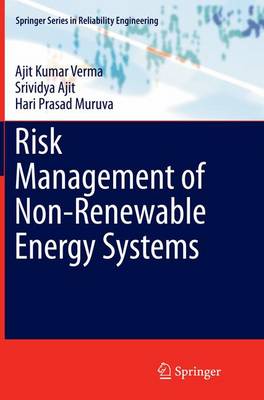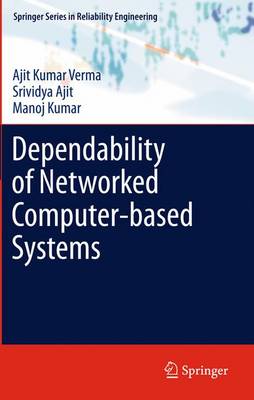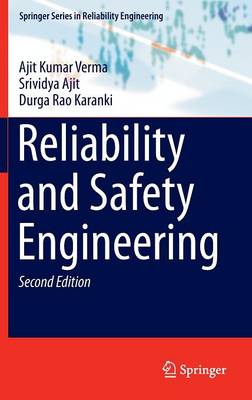Springer Series in Reliability Engineering
3 total works
Risk Management of Non-Renewable Energy Systems
by Ajit Kumar Verma, Srividya Ajit, and Hari Prasad Muruva
This book describes the basic concepts of risk and reliability with detailed descriptions of the different levels of probabilistic safety assessment of nuclear power plants (both internal and external). The book also maximizes readers insights into time dependent risk analysis through several case studies, whilst risk management with respect to non renewable energy sources is also explained. With several advanced reactors utilizing the concept of passive systems, the reliability estimation of these systems are explained in detail with the book providing a reliability estimation of components through mechanistic model approach. This book is useful for advanced undergraduate and post graduate students in nuclear engineering, aerospace engineering, industrial engineering, reliability and safety engineering, systems engineering and applied probability and statistics. This book is also suitable for one-semester graduate courses on risk management of non renewable energy systems in all conventional engineering branches like civil, mechanical, chemical, electrical and electronics as well as computer science. It will also be a valuable reference for practicing engineers, managers and researchers involved in reliability and safety activities of complex engineering systems.
Dependability of Networked Computer-based Systems
by Ajit Kumar Verma, Srividya Ajit, and Manoj Kumar
The measurement of dependability attributes on real systems is a very time-consuming and costly affair, making analytical or simulation modeling the only viable solutions. Dependability of Networked Computer-based Systems explores reliability, availability and safety modeling of networked computer-based systems used in life-critical applications such as avionics, nuclear power plants, automobiles and chemical process industries.
Dependability of Networked Computer-based Systems gives an overview of basic dependability modeling concepts and addresses new challenges in dependability modeling of networked computer-based systems, as well as new trends, their capabilities and limitations. It covers a variety of dependability modeling methods:
- stochastic processes,
- Markov and semi-Markov models,
- response-time distribution,
- stochastic Petri-net-based modeling formalisms, and
- Monte Carlo simulation models.
Dependability of Networked Computer-based Systems provides students and researchers with a detailed overview of dependability models and analysis techniques. Practicing engineers will also find this text a useful guide to decision-making based on system dependability at the design, operation and maintenance stages.
Reliability and Safety Engineering
by Ajit Kumar Verma, Srividya Ajit, and Durga Rao Karanki
Reliability and safety are core issues that must be addressed throughout the life cycle of engineering systems. Reliability and Safety Engineering presents an overview of the basic concepts, together with simple and practical illustrations.
The authors present reliability terminology in various engineering fields, viz., electronics engineering, software engineering, mechanical engineering, structural engineering and power systems engineering. The book describes the latest applications in the area of probabilistic safety assessment, such as technical specification optimization, risk monitoring and risk informed in-service inspection. Reliability and safety studies must, inevitably, deal with uncertainty, so the book includes uncertainty propagation methods: Monte Carlo simulation, fuzzy arithmetic, Dempster-Shafer theory and probability bounds. Reliability and Safety Engineering also highlights advances in system reliability and safety assessment including dynamic system modeling and uncertainty management. Case studies from typical nuclear power plants as well as from structural, software and electronic systems are also discussed.
Reliability and Safety Engineering combines discussions of the existing literature on basic concepts and applications with state-of-the-art methods used in reliability and risk assessment of engineering systems. It is designed to assist practicing engineers, students and researchers in the areas of reliability engineering and risk analysis.


